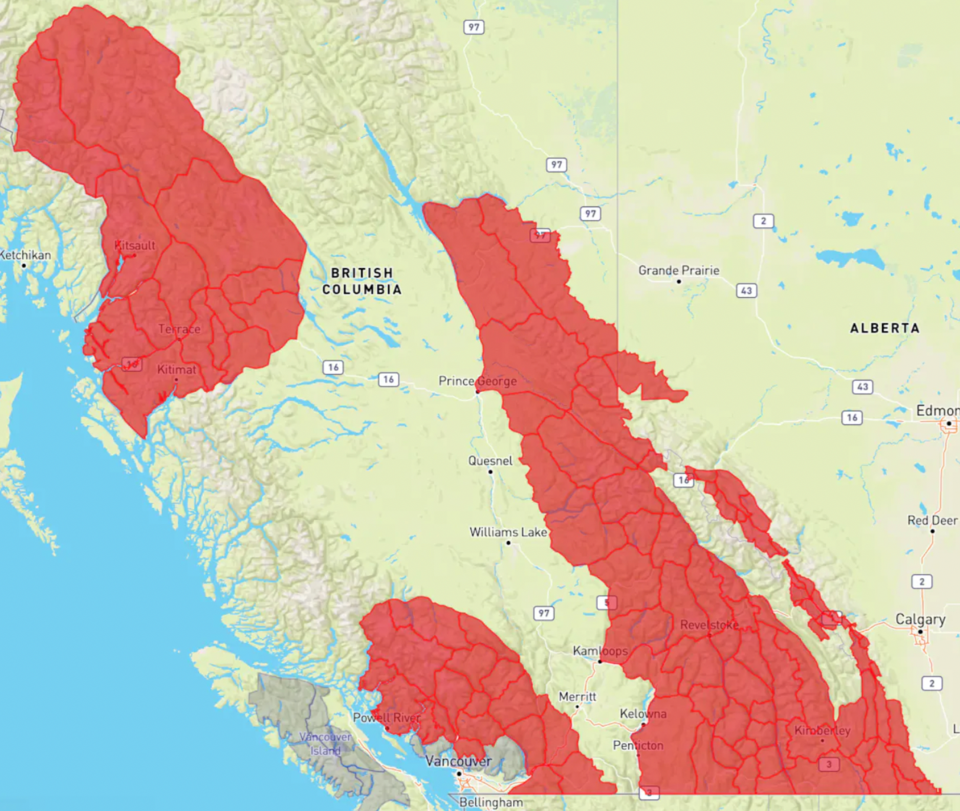Avalanche Canada has issued a widespread special avalanche warning for B.C. and Alberta, including Banff, Yoho and Kootenay national parks and Kananaskis Country for Thursday (Feb. 29) through the end of Monday (March 4).
Backcountry enthusiasts are asked to avoid all avalanche terrain because of the extremely dangerous conditions, currently rated as high.
“As the active storm period passes, widespread natural avalanche activity will slow,” states Avalanche Canada on its website.
“However, human-triggered avalanches remain likely.”
Recent storms dumped a “significant amount of snow” across Western Canada, with Banff seeing up to 40 centimetres in some areas of the park, and this new snowfall sits on prominent weak layers established during drought conditions in February.
In some areas, there is more than one weak layer.
In Banff National Park, Mt. Stephen, Mount Bosworth, and Sunshine Road avalanche zoned are periodically closed for avalanche control work on Thursday.
Areas of K-Country will also be intermittently closed for avalanche control using explosives.
According to Avalanche Canada, the structure of the weak layers takes different forms across our forecast regions, but is highly problematic and reactive in all.
“Remote triggering of avalanches on this layer will be possible,” the organization states.
“Recreationists should not underestimate the instability of these weak layers or their potential to produce large avalanches.”
Although the new snow is appealing, Avalanche Canada says making conservative terrain choices will be an important strategy for all backcountry users over the next few days.
“A good way to do this is by sticking to lower angle slopes, avoiding overhead hazard, and choosing smaller objectives that minimize the consequences of an avalanche,” it states.
“Backcountry users should always check the avalanche forecast. Everyone in a backcountry party needs the essential rescue gear – transceiver, probe, and shovel – and the training to use it.”




